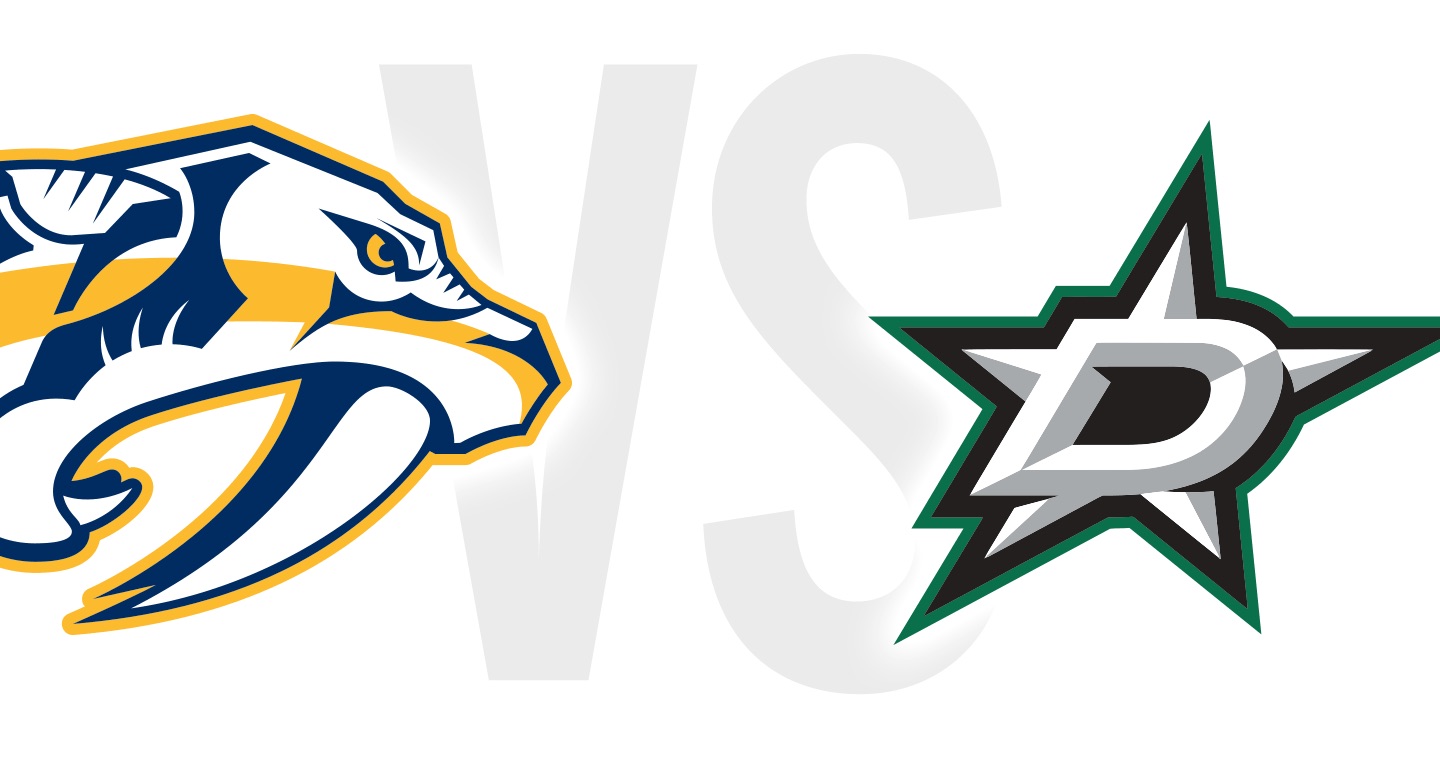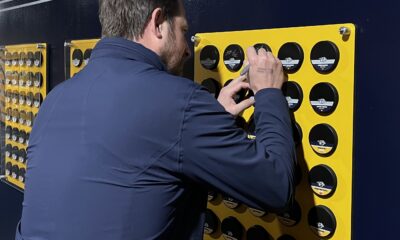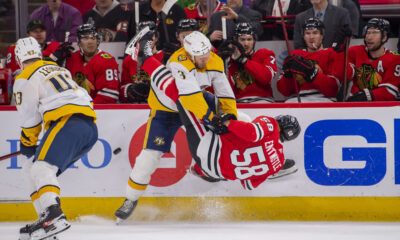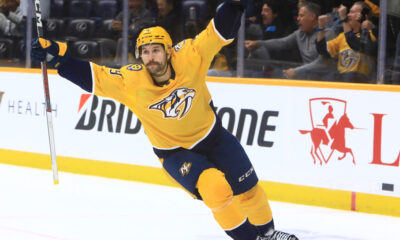Promising. That’s the word that perfectly encapsulated Nashville’s performance against Dallas in the pre-playoff/post-regular season exhibition game. After two weeks of extensive training and learning under John Hynes, the Predators seemed to have fully embraced his system of play and appeared ready to face the Arizona Coyotes. Both goaltenders shut the Stars out and Viktor Arvidsson, a forward who many speculated would rebound after a sub-par regular season, collected two goals en route to a 2-0 shutout victory. With the qualifying round on the horizon (Sunday, to be exact), here are the areas in which the Predators need to replicate their success.
Line One and Line Two
With JoFA reunited, and Kyle Turris stapled into the Duchene-Granlund duo, theoretically, the Predators have two solid top lines. Against Dallas, the Turris-Duchene-Granlund line started in the defensive zone and the neutral zone four times each at 5v5, more than any other Nashville line. Head coach John Hynes played Turris and Mikael Granlund more on the penalty kill than the power play, while Matt Duchene logged 3:30 on the man advantage. In spite of their defensive assignments, they produced three scoring chances while only allowing one. At 5v5, the second line saw a total of 9:22, almost three minutes more than the JOFA line. As a line, they were relatively good defensively, limiting the Stars to one scoring chance (high danger) at even strength, but could only muster one in return. If they can reproduce a similar defensive result and translate their success to other side of the ice, the second line might prevail as the top line against Arizona.
On the surface, the JoFA line played the best. Arvidsson snapped two shots past Ben Bishop, one on the power play and one at even strength, and Filip Forsberg also cashed in two primary assists (including this ridiculous set-up for Arvidsson’s second).
Surprisingly, the JOFA line only saw 6:34 at 5v5, which was third best on the team. Hynes selected the Smith-Bonino-Grimaldi line for most of even strength play, as they recorded 10:43 of 5v5 even strength play. In fact, none of the JOFA line saw over 15 minutes of ice-time. However, Arvidsson, Forsberg, and Johansen all tallied over three minutes of power play time. It would appear Hynes trusts the JOFA line in offensive scenarios, as he delegated the majority of the defensive assignments to the other three lines. All three players on the JOFA line were glaring question marks leading into the exhibition, but for the most part, they exceeded their expectations. Arvidsson looked a lot healthier, Johansen and Forsberg were creative with the puck, and their power play line moved the puck with certainty and efficiency. The only area of concern is their defense at even strength, as they allowed five scoring attempts in 6:34 of ice-time. Although, a good defense is the best offense.
Defense
There were some apparent positives in this game. The Stars did record a shot on Saros for the first 7:39 of the game. Nashville blocked 23 shot attempts, thwarted all three of Dallas’s power play opportunities, and stole the puck away eight times. However, they also allowed 24 scoring chances (eight of which were high danger), and allowed Dallas to shoot at the net 45 times. Nashville didn’t play outstanding defense, but they did enough to secure the win. Going forward, that cannot be a common theme. While Hynes emphasizes shot quality over shot quantity, Nashville’s defense has to be nothing short of stellar if they want success in this modified post-season.
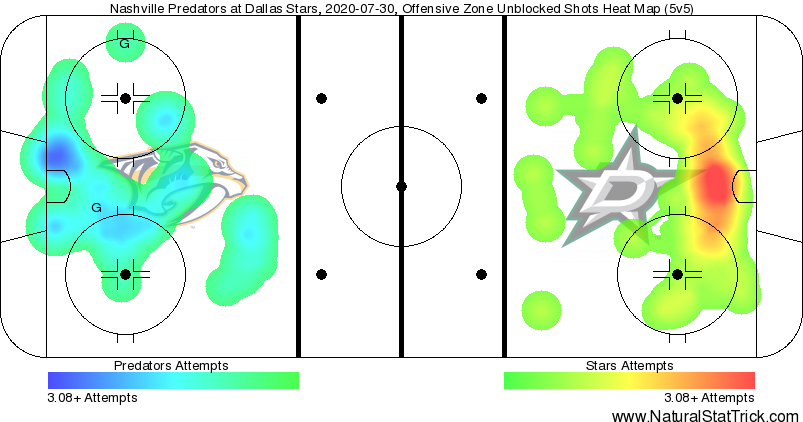
The Predators allowed too many shots right in front of Juuse Saros and Pekka Rinne, as the red area on the map shows. Dallas did not capitalize on their opportunities, but those opportunities cannot come so easily against Arizona. Nashville’s defensemen needs to force more dump-ins and control the blue line better, or all five skaters should collapse in the slot and impel Arizona’s forwards to shoot from outside of the face-off circles.
As the regular season showed, Rinne and Saros can only block so many high danger shots. Both goaltenders faced eight high danger chances, with Rinne stopping the toughest of those eight. Limiting high danger chances is much easier said than done, but eight chances through three periods is more than enough.
To Nashville’s credit, 23 blocked shots is no small achievement. Roman Josi led the team in blocked shots with five, with Ryan Ellis and Jarred Tinordi following in second with three. While blocking shots is constructive, why allow teams to slip into the slot in the first place? All in all, Nashville can use this game as a solid defensive foundation, and if they can keep fine-tuning the fundamental aspects of their system, they should play well against Arizona.
Goaltending
Juuse Saros and Pekka Rinne played very well, no other way around it. Rinne, like Arvidsson and Forsberg, were huge question marks heading into training camp and many thought the “Monster Block Pekka Rinne” days were over. He proved otherwise against Dallas. Perfect against all 13 shots he faced, Rinne denied a shorthanded chance and two out of Dallas’s five power-play shots. Arguably, he stopped Dallas’s best two chances of the game almost immediately after he replaced Saros. On the other hand, Saros was just as stellar, stopping twelve shots total and turning away some high danger chances on Dallas’s power play, including one off of his mask. It’s hard to determine who was better, and that’s a really good problem to have, especially given the circumstances around their performance at this particular point in time.
Saros has arguably proven that he should have been the number one goalie going into the playoffs two years in a row, and yet Rinne, in spite of his age, continues to show he can still be the Predators’ rock. Some of the games Rinne started in this year turned out to be pretty abysmal losses, but he still somehow secured three-shutouts too. Saros became Hynes’s number one when Saros started limiting other teams to two-goals/one-goals per game on a consistent basis. Rinne didn’t have that consistency, yet it appeared he had more to give. I don’t see a scenario where Rinne gets the start over Saros, especially since they’re facing the Coyotes, a team that notoriously gives Rinne headaches. However, since the Predators play on back-to-back days, both goaltenders will need to be sharp and ready to play.
What to Expect Going Forward
As JoFA and the second line start gelling more, they’ll see more time at even strength. The Smith-Bonino-Grimaldi was Nashville’s best line for most of the regular season, and utilizing them the most at even strength makes sense right now. Most likely, the second line will receive more offensive assignments once the series begins. The defense has a solid performance to build off, and they’ll be playing in front of two goalies challenging each other for the number one spot. While these are all things to be positive about, it does not guarantee success– yet, the game against Dallas certainly gives fans a reason to be hopeful.

